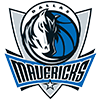In the ever-evolving landscape of daily fantasy sports, the one given is the continued predominance of large tournaments over any other contest format. While some DFS pros can grind out a living on head-to-heads and 50/50s, guaranteed prize pools (GPPs) with top-heavy payout structures are the main draw for most fantasy football enthusiasts.
In addition to being far more exciting than their cash-game brethren, GPPs tend to provide softer competition because they appeal to so many more people. Professional DFS players still account for a sizable portion of entries, but enough scrubs are in the mix that you don't need to be a pro to find an edge.
The first step is to embrace variance — not only within each individual lineup, but also in terms of preparing for the inevitability of multi-week losing streaks. Big-picture strategy isn't just for pros, and while it's far from the most exciting part of DFS, it lays the foundation for an enjoyable (and hopefully profitable) NFL campaign.
But enough of that for now; here's the real question — how do we land lineups in the elusive 99th percentile? The most important step is stacking three or four players from a single game to take advantage of positive scoring correlations. Once we have this foundation, we can sprinkle in a mixture of high-ceiling players and underpriced "value" plays. There's also an aspect of game theory. The goal isn't to score as many points as possible, but rather to finish ahead of as many opponents
In the ever-evolving landscape of daily fantasy sports, the one given is the continued predominance of large tournaments over any other contest format. While some DFS pros can grind out a living on head-to-heads and 50/50s, guaranteed prize pools (GPPs) with top-heavy payout structures are the main draw for most fantasy football enthusiasts.
In addition to being far more exciting than their cash-game brethren, GPPs tend to provide softer competition because they appeal to so many more people. Professional DFS players still account for a sizable portion of entries, but enough scrubs are in the mix that you don't need to be a pro to find an edge.
The first step is to embrace variance — not only within each individual lineup, but also in terms of preparing for the inevitability of multi-week losing streaks. Big-picture strategy isn't just for pros, and while it's far from the most exciting part of DFS, it lays the foundation for an enjoyable (and hopefully profitable) NFL campaign.
But enough of that for now; here's the real question — how do we land lineups in the elusive 99th percentile? The most important step is stacking three or four players from a single game to take advantage of positive scoring correlations. Once we have this foundation, we can sprinkle in a mixture of high-ceiling players and underpriced "value" plays. There's also an aspect of game theory. The goal isn't to score as many points as possible, but rather to finish ahead of as many opponents as possible.

While the typical target for a hefty payday is somewhere in the range of 165 fantasy points on FanDuel and 200 on DraftKings, it's not uncommon to cash in big with fewer points during a low-scoring week. Obsessing over player ownership percentages to target this scenario is doing too much, but it's similarly foolish to give zero thought to which strategies are likely to be popular.
The Strategy Before the Strategy
If there's one thing experienced players and novices have in common, it's that none of us is clever enough to grind out a profit in the long term by consistently squeaking over the cash line in tournaments. Contests pay out one-fourth or one-fifth of the field, with 10-25 percent typically going to first place and about half the money concentrated within the 99th percentile. There also isn't much difference between finishing 81st percentile or 97th.
For a tournament-only DFS player like myself, there will always be more losing weeks than winning ones. Fortunately, we can only lose as much as we spend on entry fees, while profitable weeks have the potential to multiply that money many times over. We also have a means to weather the variance storm with the help of smart contest selection and bankroll management.
Consider how a lineup might win $500 by striking fourth place in a $20 tournament with 1,000 entries, while the same lineup would win about $150 off the same $20 entry fee by finishing 400th in a contest with 100,000-plus entries (namely the Sunday Million on FanDuel or Millionaire Maker on DraftKings).
Most of my success has come in tournaments with a few thousand entries where a top-10 finish is more than a pipe dream. Variance is still harsh compared to double-ups and 50/50s, but there at least are big rewards for the top 0.5 percent of lineups, whereas the Sunday Million or Millionaire Maker is more like .01 percent — a.k.a. a lottery ticket.
Be it $50 or $50,000, it's best to set aside a "bankroll" for DFS at the start of the season and think of this cash as gone. It's the same thing any professional poker player or sports bettor would recommend, as emotional detachment from the money increases the likelihood of optimal decisions. A fear of losing tends to inspire overly cautious decisions, i.e., hedging bets rather than committing to the best plays in every lineup.
There's no hard rule on how to manage this bankroll each week. I have often seen DFS touts recommend using 10 percent of a bankroll on any given slate, but I'm comfortable going up to a quarter or even a third of whatever I have left. If I start with a $1,000 bankroll and lose all of the $300 I put in play Week 1, then my Week 2 investment will be $210 (30 percent of $700) rather than $300 again.
It's technically impossible to be left at zero if this strategy is strictly followed, though it is possible to be quite limited if the early weeks don't go well … which brings me to the reason I prefer this aggressive approach. I've found my edge is largest at the beginning of the season when there's more soft money in play on DFS sites and player pricing hasn't fully adjusted to developments from the offseason/summer.
I'm willing to risk early bankroll depletion to take advantage of these favorable conditions, rather than playing things safe to ensure I have plenty of funds later in the season when salaries have stabilized and DFS pros account for a higher percentage of tournament entries. Last season was actually the first time this approach didn't work for me; I took a small loss after a four-year streak with significant profits.
Looking at the last five years total, I've been a highly profitable NFL DFS player in September and October, but then have given some of that money back in November and December. I imagine plenty of others share this experience, as the less-skilled DFS players tend to be out of the game (or at least very limited) by midseason, leaving the big sharks to feast on the little sharks in waters without many fish.
Raising The Ceiling With Correlation Plays
The short version is that we always want to stack a quarterback with at least one of his pass catchers, making a possible exception for Lamar Jackson. The long version is that everybody already knows this and we can't get away with lazily picking any one teammate to join the quarterback we like.
Certain types of pass catchers have stronger correlations with their QBs scoring than others — a target hog like DeAndre Hopkins or Julio Jones is the obvious example, but we also need to acknowledge that not all targets are created equal. If we're looking for the games where a QB posts his best fantasy totals, it's a good bet he'll be efficient on deep balls and red-zone passes, while short throws between the 20s are far less important.
Last year's Falcons provide an interesting example, as they had three wideouts with vastly different profiles who topped 90 targets and 60 catches. Jones had an average target depth (aDOT) of 13.7 yards and drew 17 red-zone targets; Calvin Ridley was at 9.6 aDOT with nine red-zone looks; Mohamed Sanu brought up the rear at 7.7 aDOT and six red-zone chances.
A look at Matt Ryan's seven games with at least 25 fantasy points — the weeks you'd want him in a DFS tourney lineup — reveals that Sanu landed right around his per-game season averages with four catches for 53.9 yards and 0.3 scores, while Jones (116.9 yards) and especially Ridley (65.1 yards, 1.1 TDs) did better when Ryan did better. Then we have tight end Austin Hooper — he of the 6.6 aDOT — who actually averaged fewer PPR points (9.7) in Ryan's big games than he did the other nine weeks (10.6).
At the top of the aDOT leaderboard, DeSean Jackson (18.6), Mike Evans (15.7) and Robby Anderson (15.6) showed a strong tendency to have their best games in the biggest performances for their QBs, and the same goes for John Brown (15.7) before Baltimore benched Joe Flacco. A quick study of the wide receivers with the lowest aDOT in the league shows Adam Humphries (6.1), Golden Tate (6.1) and Cole Beasley (7.1) were all over the place in blow-up performances for their QBs, though Chester Rogers (6.5) was closely tied to Andrew Luck.
That's not to say we should use Will Fuller (14.2 aDOT) over Hopkins (11.5) as the partner for Deshaun Watson, but rather that it's a good idea to use Fuller over Keke Coutee (5.1) if we're making it a three-man stack. While it's tempting to chase a low-ownership stack that uses a quarterback while fading his No. 1 target, the extent of interdependence usually makes it a bad idea with a pairing like Watson-Hopkins or Ryan-Jones.
It's already asking a lot for a quarterback to have the type of performance that might land in a tourney-winning DFS lineup. Hoping it happens during a mediocre game for a receiver with target share higher than 25 percent is simply asking too much; the payoff isn't big enough to offset the low probability of success, given that we also need strong performances from the other seven lineup spots.
I also tend to avoid using a QB and RB from the same team, as it concedes upside given the relative infrequency of touchdowns and long gains on passes to RBs. The Saints, Chiefs and Patriots are noteworthy exceptions, each showing a multi-year track record of throwing to RBs near the goal line. Players like Tarik Cohen, Jalen Richard and Nyheim Hines can also work as the third wheel on a stack, given the strong positive correlation between their snaps/touches and team pass attempts. Just remember that every short throw to Hines entails the opportunity cost of a possible deep pass from Luck to T.Y. Hilton.
I prefer a pass catcher from the opposing team as the third wheel for my stack, hoping for a competitive game in which both QBs stay active deep into the fourth quarter. We can't directly take advantage of the proven fantasy-scoring correlation between QBs in the same game, but we can capture some of this value by rostering the opposing QB's No. 1 target or favorite deep threat.
Digging a little deeper, there's also a proven correlation between overall team performance and rushing volume. This isn't quite as important as the passing-game stacks for our purposes, but there is some advantage to pairing a ground-dependent RB with his team's defense.
I say "ground-dependent" because we're looking for backs who get more playing time and more touches when their teams are nursing a lead (hopefully as the product of a strong game from the defense). Leading examples from 2018 include Jordan Howard, Sony Michel, Marlon Mack and Derrick Henry, whereas pass-catching backs like Cohen, Hines, James White and Dion Lewis often got more work when their teams' defenses struggled.
This ministack isn't just a matter of capitalizing on clock-killing carries, as there's also the scenario where a fast start by a running back forces the opposing offense to abandon its own rushing attack while playing from behind, thus creating more opportunities for sacks and turnovers. Ideally, some of these sacks and turnovers would then set up our running back with good field position to punch in another touchdown.
Embracing Inconsistent Players
When we think of high-variance players, the first thing that comes to mind is modest-volume deep threats like DeSean Jackson, Ted Ginn, John Brown and Kenny Stills, whose fantasy scoring largely depends on low-percentage passes that are worth a lot of points if completed. The difference between a 3-40-0 receiving line and a 4-100-1 line usually comes down to one or two snaps.
Our deep threat is a good bet to have at least three or four games per season in which he vastly outperforms his mid-level salary, and his DFS ownership rate may actually be lower when his price is lower, as both variables tend to correspond with the inevitable cold streaks that scare people away. As long as there hasn't been a substantial change in snap count or his team's offensive philosophy, this is the perfect time to pounce on a player like Jackson or Stills.
Of course, the deep threat isn't the only player archetype that creates affordable, high-ceiling options for tournament lineups. The proliferation of backfield specialization also provides opportunity, as players like Henry and Cohen are vulnerable to massive volume swings, whereas three-down backs tend to get more targets when their ground volume is low (and vice versa). We might use Henry when the Titans are heavy favorites, while Cohen is best utilized when the Bears are underdogs or slight favorites.
It would be negligent not to also mention the archetype of the touchdown-dependent pass catcher — often a TE or tall WR in a good offense — though I suspect there's a tendency to overestimate the predictive value of past red-zone stats. Whether we're talking about efficiency or volume, these metrics are far less stable than aDOT or even yards per reception, making it difficult to pinpoint which players actually merit the label of "red-zone threat."
If anything, players who score a disproportionate share of their fantasy points from touchdowns tend to be overpriced on DFS sites, as history suggests unusual ratios of TDs:yards or TDs:catches rarely hold up over time. It's still worth browsing the stats for volume in the red zone and inside the 10-yard line, but I'm not a fan of using some scrub just because three of his six targets through two weeks have come near the end zone.
A few players stand out with multi-year track records for increased target share in the red zone, namely Kyle Rudolph, Cameron Brate, Davante Adams and Sterling Shepard (with varying degrees of success). Things are even less promising if we look at the 2017 leaders in discrepancy between red-zone and overall target share: Adams (+15.0 percentage points) and Cooper Kupp (9.6) continued scoring in 2018, but Jimmy Graham (19.8), Rudolph (11.1), Tyler Kroft (9.5), Josh Doctson (9.3), Michael Crabtree (9.2), David Njoku (9.0), Donte Moncrief (7.4) and Nelson Agholor (6.3) each had four or fewer TDs.
Long story short, it's best to focus on downfield targets and overall volume rather than harping on what might or might not happen in the red zone. In most cases we're talking about a tiebreaker for a tough decision, not something that will dictate the overall composition of a lineup.
Value Still Matters
The word "value" is thrown around often, and not just in the world of fantasy sports. For our purposes we'll keep it simple and say a player is a "value" when he has good odds of outperforming the scoring range typically associated with his DFS salary.
This range differs based on DFS site and player position, but we can at least extract one easy example from DraftKings, where the 2018 algorithm generally allowed us to project running backs at about 2.5 fantasy points (2.5x) for every $1,000 of salary. A 3x projection at RB would be one of the top plays in a typical week, and a 4x would be reserved for rare occasions like Spencer Ware taking over as the starter two days before his Week 13 game.
Some would fade Ware in that spot on the basis of sky-high ownership, but I'm not inclined to get too cute given that even the most obvious plays rarely extend beyond 50 percent owned on the main DFS tournament slates. It's a tougher call when the value isn't so extreme, or when there's a position (usually RB) with a bunch of similarly strong options.
Aside from the obvious case of a cheap backup taking over for an injured/suspended starter, value can also stem from more organic role changes or simply from favorable matchups. Just be careful when targeting the latter, as there's a common tendency to overestimate the predictive value of past results, especially when dealing with defenses.
Team defensive statistics consistently show lower rates of year-to-year correlation than team offense stats, and current-year data offers minimal predictive value until November and December. Defense vs. position (DvP) numbers need to be treated with an extra degree of caution, as they often tell us about past matchups and game scripts more so than the relative weaknesses of a unit.
After all, it doesn't mean anything for a defense to have given up the third-most points to tight ends through eight weeks if the schedule included games against Travis Kelce, George Kittle and Zach Ertz. Tight end admittedly has more matchup distortion than other spots, but we can easily run into a version of the same problem at QB, RB or WR.
To truly take advantage of matchups, it helps to have a solid base of knowledge about each team's defensive scheme and personnel, going a step beyond what's typically needed for success in season-long leagues. For the truly dedicated, this might mean combing through injury reports each week, or at least keeping up with player grades from Pro Football Focus and advanced team stats from sites like Football Outsiders. The Defense-adjusted Value Over Average (DVOA) stats from FO are my favorite metric for analyzing team strength, though they aren't especially useful early in the season.
Differentiating From the Crowd
The importance of being "contrarian" is perhaps overstated, but there's still something to be said for creating unique lineups. The reality on a slate with double-digit NFL games is that only a handful of players, at most, will be more than 20 percent owned. Many weeks I find my lineups littered with low-ownership players before I've given any thought to being contrarian.
I've also experienced weeks when the stats and prices seem to be pointing everyone in the same direction. This is when I start to be more wary of the top over/unders, perhaps choosing my QB-receiver stacks from games that only have the third- or fourth-highest totals of the week. It's generally a safe bet that the game with the highest total will be a popular choice for stacks, so I won't hesitate to fade it — or maybe just use a lone RB from that game — when the individual player prices aren't distinctly favorable.
There's nothing wrong with stacking a game that has a low over/under if there are multiple underpriced players in the contest. Early last season a Bengals-Panthers game had an over/under of just 44, but it was a great choice for a stack because DFS pricing hadn't yet accounted for Christian McCaffrey and Tyler Boyd taking on larger roles. Once I decided on rostering both players, it was a matter of common sense to pick Cam Newton or Andy Dalton as well.
My other primary method for finding profitable stacks at modest ownership is to simply pinpoint games where I'd want to bet the over, or even games where I think the over/under is accurate but expect both teams to take a pass-heavy approach. The Patriots are famous for crafting drastically different gameplans based on opponent, but they aren't the only team capable of adjusting to a defense that's strong against the run and soft against the pass (the Saints were a prime example last year).
Pace stats and run:pass ratios also warrant close examination, as the raw numbers may tell us more about a team's success than its strategy. The Rams have been an obvious example the last couple seasons, finishing top 10 in run-play rate despite their preference for an uptempo, pass-first approach early in games. Cumulative pace and volume has been dragged down by their success, which often creates conditions for draining clock after halftime. The Rams are prime for a QB-WR stack whenever their game is expected to be close, even if their implied total isn't as high as it might be in a projected blowout win.
That brings me to one of the most common DFS mistakes: targeting QBs, WRs and TEs from favorites in games with high over/unders but also large point spreads. If anything, the circumstances for the underdog's players tend to be better once volume and ownership are taken into account. There are few things more frustrating than watching your QB finish with 18 fantasy points after he put up 16 in the first half alone.
Pinpointing ownership ahead of time is an inexact science, but we can at least point toward a few other traps to avoid. Subpar DFS players often rely on those color-coded DvP stats before they have any predictive value and without accounting for the context in which they occurred. If DvP stats are my primary reason for picking a player, it probably means I'm getting mediocre value combined with too-high ownership.
In addition to fading or ignoring DvP stats, I'll sometimes take a stance against the field by rostering a team defense that's facing a popular play at QB or RB. Likewise, I might use Sony Michel if I'm already committed to fading Tom Brady when I know the Patriots quarterback will be a popular choice. To be clear, these tactics aren't valuable enough to warrant forcing a sketchy play into a lineup — it's more like a useful tiebreaker if I'm already considering Michel.
This strategy is particularly useful when the Pats are sizable favorites, as Brady's presumed efficiency may ultimately be outweighed by the impact of ceding volume to the run game after halftime. Finding conditions for favorable volume is just as important as finding conditions that lead to efficiency.
I'll often use a tight end or wide receiver against a tough defense, knowing the matchup will scare away my opponents while also offering potential for the pass-catcher's team to abandon its running game. If I expect Ben Roethlisberger to throw 45 passes, I'll probably want JuJu Smith-Schuster in my lineups even if he's facing a tough defense.
Using a player like Smith-Schuster when his ownership is reduced makes it easier to create unique lineups without rostering obscure players or ignoring the obvious value available at other spots. This is the perfect way to finish out a lineup after assembling a core based on point-per-dollar value and interplayer correlations.




































